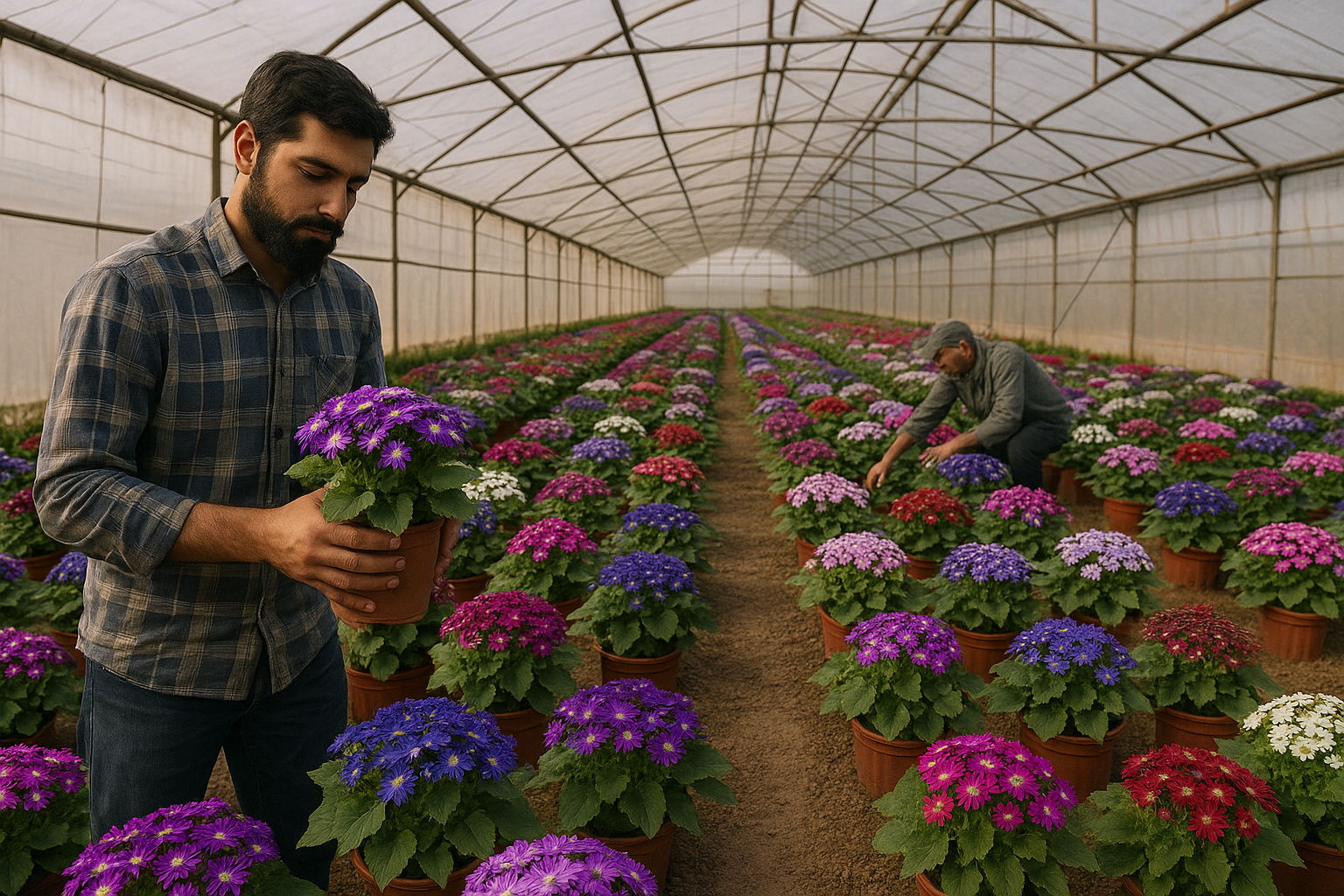Sustainability Challenges in Cineraria Cultivation: A Life Cycle Perspective from Iran
A life cycle assessment of greenhouse cineraria production in Iran reveals significant environmental and health impacts, mainly from diesel use and agrochemicals. The study urges a shift to cleaner fuels, biofertilizers, and sustainable farming practices to reduce ecological harm. Ask ChatGPT

In a comprehensive study conducted by researchers from the Department of Agricultural Machinery Engineering, Faculty of Agriculture, University of Tehran, the environmental implications of greenhouse-based cineraria production were examined using a life cycle assessment (LCA) methodology. Published in Energy Nexus, the research evaluates the full environmental footprint of cultivating Pericallis × hybrida, commonly known as cineraria, in greenhouses located in Savojbolagh County, Iran. Though renowned for its ornamental beauty, the production of cineraria demands intensive energy and chemical inputs, raising concerns about its sustainability. The study deploys a cradle-to-gate LCA framework to trace the impact from seed to harvest, drawing attention to the critical environmental costs and suggesting actionable reforms for the ornamental horticulture sector.
Cineraria’s Hidden Ecological Burden
Greenhouse cultivation of cineraria is essential in Iran’s colder regions, where outdoor farming is limited during fall and winter. Seeds are planted in pots during summer and gradually transitioned into controlled greenhouse environments. These greenhouses rely heavily on diesel and, to a lesser extent, natural gas for heating and electricity, essential for operating water pumps, lighting, and ventilation systems. Despite their aesthetic contribution, the environmental consequences are sobering. The LCA methodology revealed that producing just one cineraria plant results in 2.49E-03 kg C2H3Cl eq. of carcinogenic emissions. Over half of this is attributed to electricity used in ventilation and irrigation. Furthermore, the use of natural gas in electricity generation contributes 1.30E-03 kg C2H3Cl eq. of aromatic hydrocarbons, and the ionizing radiation impact is measured at 6.72E-02 Bq C-14 eq., also primarily due to electricity consumption.
Diesel, Fertilizers, and Pesticides: The Triple Threat
Among the most environmentally damaging inputs are diesel fuel, fertilizers, and chemical pesticides. Diesel is used not only to power greenhouse equipment but also in boilers for heating. Its combustion alone accounts for the majority of impacts in the respiratory inorganic and organic categories, contributing 1.67E-04 kg PM2.5 eq. and 8.63E-05 kg C2H4 eq. per plant. Non-carcinogenic effects, calculated at 1.58E-02 kg C2H3Cl eq., stem largely from diesel combustion and agrochemical usage. The pesticides atrazine and diazinon are especially problematic, contributing to both ozone depletion and aquatic toxicity. The study found that diazinon alone was responsible for the release of 7.46E+01 kg of harmful compounds into the soil per functional unit (FU), while 99% of terrestrial ecotoxicity was due to heavy metals, zinc, copper, and cadmium, originating from fertilizers. These emissions seriously threaten soil health, biodiversity, and water systems.
Measured Damages: From Greenhouses to Global Warming
The life cycle assessment explored 15 midpoint and four endpoint categories: human health, ecosystem quality, climate change, and resource depletion. In total, one cineraria plant was responsible for emitting 2.26E-01 kg CO₂, of which 70% was linked to diesel use. It also consumed 3.33 MJ of non-renewable energy and generated 1.69E-07 DALY in health impacts, alongside 2.89E-01 PDFm²yr in ecosystem quality degradation. Resource damage, primarily from fuel and fertilizer production, totaled 8.83 MJ of primary energy consumption. The production of phosphate fertilizers ranked highest in the mineral extraction category, due to the need for zinc, nickel, and copper. Weighted assessments underscore that direct emissions from agrochemicals and fossil fuels are the primary culprits across all categories. The study visualizes how diesel combustion at boilers significantly damages human health, while fertilizers are shown to affect every endpoint category, especially nitrogen, which alone dominates emissions and environmental impact across the board.
Rewriting the Script: Sustainable Alternatives and Policy Action
To mitigate these consequences, the authors recommend a transition to cleaner fuels such as biodiesel or biogas in greenhouse heating. Biofertilizers and integrated pest management (IPM) are advocated to reduce chemical dependency. Policy implications are far-reaching: there is an urgent need for stricter regulation of fertilizer and pesticide use, energy subsidies for renewable alternatives, and mandatory environmental assessments for agricultural enterprises. Educational outreach is also vital. Greenhouse operators need to be trained in energy efficiency and chemical management practices to shift toward more sustainable production systems. Innovations like precision agriculture, renewable energy systems, and thermal insulation can reduce dependency on diesel and further lessen environmental burdens.
Beyond Agriculture: Public Health and Long-Term Vision
While the study’s primary focus is environmental, its findings resonate strongly within the public health domain. Diesel exhaust and pesticide exposure are associated with respiratory, reproductive, and neurological risks. The results emphasize the need for robust workplace safety measures, monitoring emissions in agricultural environments, and public health campaigns to inform greenhouse workers and nearby communities about these risks. Long-term prospects include scaling up research into sustainable horticultural practices, promoting agroforestry, and exploring climate-resilient farming systems. By integrating these elements, the ornamental plant industry can shift from an extractive model to a regenerative one, benefiting not just the environment but also human well-being.
The detailed life cycle assessment of cineraria production shines a light on the profound environmental and health costs hidden behind the flower’s aesthetic appeal. With a weighted environmental damage total of 89.7 µPt per plant, the case for reform is both urgent and compelling. The study not only provides a roadmap for reducing these impacts but also underscores the broader interconnectedness of agricultural practices, environmental stewardship, and human health. As the ornamental horticulture industry continues to grow, aligning beauty with ecological responsibility must become a central objective.
- FIRST PUBLISHED IN:
- Devdiscourse










